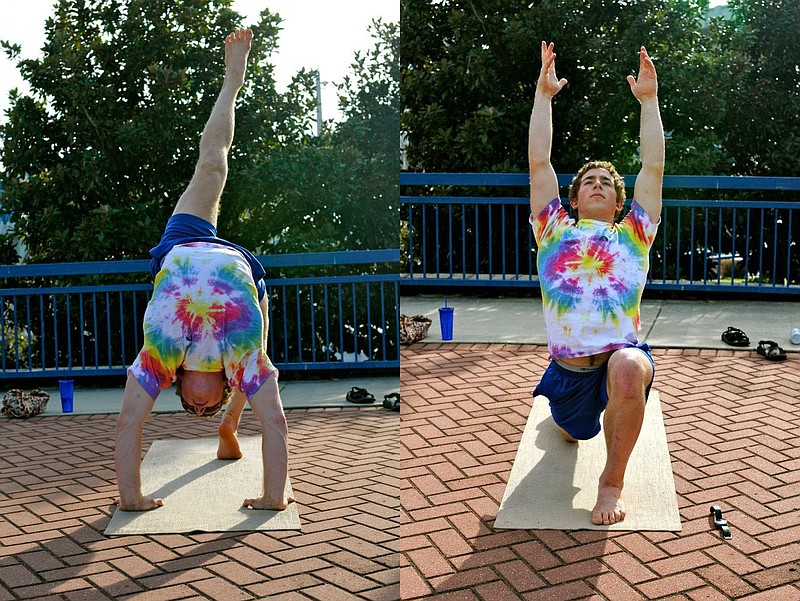Mindfulness on the rocks
Storey suggests a number of ways to stay mindful while climbing: Getting warm before getting on the rock, staying tuned-in through every aspect of climbing, and methodically going through moves. If you are doing these, then you can climb in a better flow-state with less ego, and ultimately you can be a good, healthy, “lifetime climber.”
A few years ago, while living in Colorado, Blake Storey experienced a climbing accident that left him with a broken humerus, shattered jaw and fractured spine. Not long before the accident, he had been diagnosed with Type 1 diabetes.
These two incidents set Storey on a path of healing through physical therapy, yoga and acupuncture - a journey that ultimately led him to become a yoga instructor at High Point Climbing Gym and to open Chattanooga Holistic Medicine, which offers acupuncture for climbers, among other services.
For Storey, yoga, acupuncture and climbing have a common thread: a present-minded flow. He describes the yoga-climbing relationship as a sort of yin and yang; complementary in nature, but perhaps opposing on the surface.
"Often while climbing, we are on a huge canvas, exposed, usually outside. Yoga, on the other hand, takes place close to the ground, on our mat. The yogi works with gravity rather than against it, and there isn't that evident danger often seen when climbing," says Storey.
What he attempts to do through his yoga classes and through Chattanooga Holistic Medicine is to allow for calm mindfulness through movement, he says. The more "calm or zen you are when you are climbing, the better you climb," says Storey. "When we stall out or think about the consequences of the move, we tend to fall."
His yoga classes focus on three primary skills climbers often work on: flexibility, balance and flow.
The healing ingredient to his practice is acupuncture, says Storey.
"Climbers often experience injuries in their elbows, shoulders, ankles, knees and hips," he says. However, often climbers do not address issues until there is pain or, as Storey calls it, "a bulge."
"Think of it like a ball full of air," he says. "You put pressure on one side of the ball and you will see the bulge on the other side. Sometimes we may not know what is causing the pain, so acupuncture addresses the root of the problem. Then, we can better understand what the cause is and I can give the client an exercise to address it."
But the biggest takeaway message of his practices, says Storey, is that life is a process.
"Instead of climbing for a send, to say that we climb a certain number or grade, we should practice giving every move our attention," he says. "By being less fixated on the accomplishment or the last climb, since you usually quit after either sending a project or deciding to move on to a new or different problem, we can focus more on the process."
After all, says Storey, "the learning that can take place in the process of your climbing achievements is what matters."
For more information on Blake's studio visit ChattanoogaHolisticMedicine.com.
